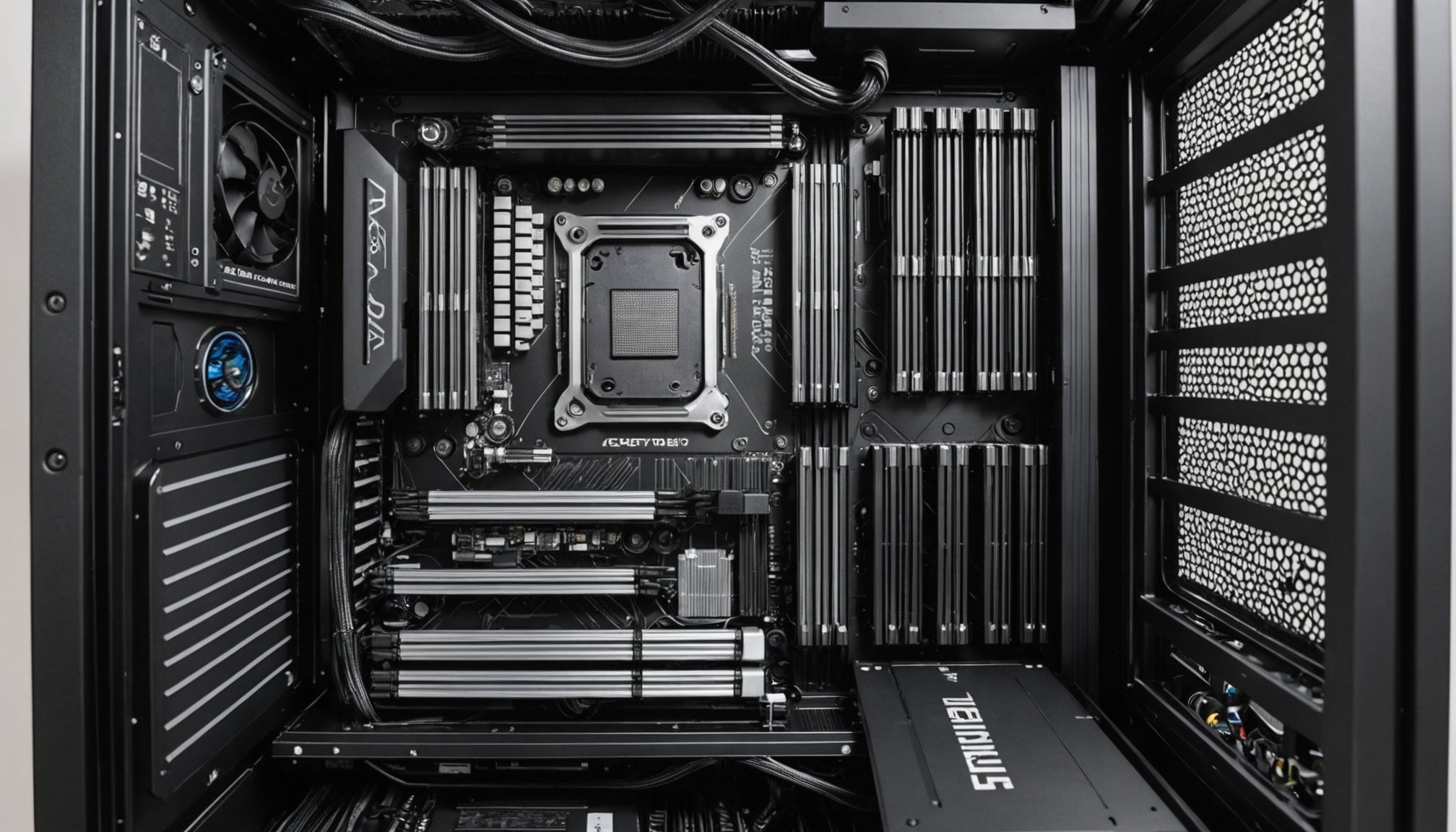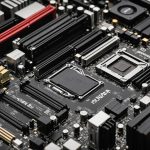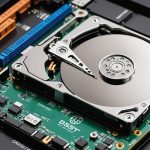Importance of PC Case Airflow
Understanding the significance of airflow in your PC case is crucial for maintaining an efficient cooling system and ensuring system longevity. Airflow plays a significant role in dissipating the heat produced by components such as the CPU and GPU, which are notorious for generating substantial heat during operation. Ensuring that cool air is efficiently cycled through your case prevents thermal throttling, which can lead to degraded performance and even shortened component lifespan.
When airflow is obstructed or insufficient, it can result in a buildup of heat, causing components to operate at higher temperatures than designed. This consistent exposure to elevated temperatures can not only reduce the efficiency of your hardware but also lead to premature failure of key components. Poor airflow may result in the need for more frequent component replacement and higher electricity consumption due to fans and coolers working overtime.
This might interest you : Top considerations for selecting the perfect motherboard for your high-end pc build
Components such as the motherboard, RAM, and storage drives also benefit from effective airflow management. Adequate airflow aids in maintaining a stable ambient temperature within the case, which is necessary for overall system stability. By investing time into optimizing airflow, you can enhance your PC’s performance, ensure components function within their intended thermal specifications, and extend the operational lifespan of your system.
Effective Fan Placement Strategies
Understanding how to place your fans effectively is vital for optimizing PC airflow. The nuanced arrangement of intake and exhaust positioning can make a noticeable difference in cooling efficiency. Generally, placing fans at the front of the case for intake and at the back or top for exhaust creates a well-balanced flow, avoiding heat buildup.
This might interest you : Unleashing speed: discover the advantages of installing your operating system on a solid-state drive
Intake vs. Exhaust Positioning
Intake fans draw cool air into the case, directly cooling key components. In contrast, exhaust fans dispel warm air produced by internal hardware. A strategic combination of these can stabilize temperature.
Optimal Fan Configurations
For different case sizes, varying fan configurations may be necessary. In larger cases, multiple intake and exhaust fans enhance circulation. Smaller cases might suffice with fewer fans, provided air entry and exit points are not obstructed.
Positive vs. Negative Pressure Setups
Fan placement affects whether your setup has positive or negative pressure. Positive pressure, created by more intake fans, minimizes dust intrusion but might struggle with heat expulsion. Negative pressure setups favour exhaust fans, possibly drawing more dust but expelling warm air effectively. Balancing these pressures ensures efficient cooling without compromising system performance.
Choosing the Right Fans for Your Setup
Selecting the appropriate types of fans is essential for optimizing your PC’s cooling capabilities. Understanding the distinction between airflow fans and static pressure fans can greatly enhance your setup’s performance. Airflow fans are advantageous for moving large volumes of air and are ideal for unobstructed areas. They are commonly used in open spaces within the case, providing ample circulation for components.
On the other hand, static pressure fans excel in situations where airflow is hindered by obstacles like heatsinks or radiators. These fans generate concentrated air pressure to keep components like CPU coolers and radiators effectively chilled despite resistance.
When considering fan sizes and RPM, larger fans generally provide quieter operation due to lower RPMs needed to achieve effective cooling. Common sizes include 120mm and 140mm, but choice often depends on your case design and specific cooling needs.
Investing in reputable brands known for performance like Noctua, Corsair, or Be Quiet! can also ensure reliability and efficiency. These brands are often highlighted in performance reviews for their innovative designs and durable build quality, making them a sound choice for optimizing your PC’s airflow and cooling.
Cable Management for Improved Airflow
Effective cable management is essential for maintaining optimal airflow and ensuring your PC performs at its best. Proper cable routing can significantly reduce obstructions, allowing the cooling system to function efficiently. To achieve this, it’s key to organize cables neatly and strategically within the case.
Techniques for Effective Cable Routing
Use cable ties or Velcro straps to bundle cables together, minimizing clutter and promoting better airflow. These tools not only keep cables in place but also prevent them from obstructing fan pathways. It’s advisable to route cables through designated management areas or the back panel of the case, keeping them away from core components like the motherboard and CPU cooler.
Importance of Visual Cable Management
An efficient cable setup not only enhances performance but also elevates the aesthetic of your build. Clear separation between power connectors, data cables, and fan wires contributes to a clean, professional appearance. Compare an organized build to a tangled mess and the benefits become evident: improved airflow, easier maintenance, and a pleasing visual presentation. By investing time in meticulous cable management, you pave the way for smoother airflow and a more efficient, reliable system.
Modifications for Enhanced Cooling
Implementing effective airflow modifications can significantly improve your PC’s cooling performance. This is crucial for maintaining system stability and prolonging the lifespan of your components.
Cutting Mesh Filters
Mesh filters help keep dust out, but they can also restrict airflow. Cutting or optimizing these meshes can increase airflow efficiency while still providing adequate protection from dust particles. Removing sections of overly dense mesh can facilitate better air movement, ensuring components remain cool.
Adding or Upgrading Fans
Incorporating extra fans or upgrading existing ones is another impactful modification. Choose higher-quality or more powerful fans to replace stock units. Adding fans to unoccupied slots, such as side panels or the bottom of the case, increases overall airflow. Ensure the fan’s direction aligns with your setup’s intake and exhaust configuration for better performance.
Case Modifications
For more advanced users, case modifications like drilling additional holes or slots can further enhance ventilation. This approach may require technical skill, but results in a custom airflow path tailored to your system’s specific needs. By strategically locating these modifications, you can create highly efficient cooling solutions that keep your hardware functioning optimally.
Common Airflow Issues and Troubleshooting
Airflow troubleshooting is crucial for maintaining an efficient cooling system in your PC. Identifying potential signs of inadequate airflow can prevent performance degradation and hardware damage. Common indicators include unusually high temperatures, fan noise, and erratic system behavior, hinting that your PC’s cooling system might require inspection.
Identifying Mistakes
One typical mistake in airflow setups is improper fan placement, where intake and exhaust fans fail to create a balanced flow, compromising cooling efficiency. Using the wrong types of fans, such as employing static pressure fans in unobstructed areas, can also impede proper airflow. Cable management issues, leaving cables cluttered, obstruct airflow pathways and can lead to overheating.
Step-by-Step Guide
- Assess Fan Configurations: Ensure intake and exhaust positioning aligns with system requirements.
- Adjust Pressure Setups: Balance positive and negative pressure to optimize cooling without excessive dust entry.
- Organize Internal Cables: Utilize ties and designated cable routes to clear fan pathways.
- Inspect Fans and Filters: Remove dust from filters and replace inefficient fans to restore optimal airflow.
By addressing these issues and following this guide, you can effectively enhance your PC’s airflow and maintain its optimal performance.
Visual Aids and Diagrams
When optimizing PC case airflow, airflow diagrams play a crucial role in visualizing the best strategies for cooling your system. These visual aids help illustrate complex ideas, making it easier to comprehend the importance of fan placement, cable management, and pressure setups.
Understanding Airflow Concepts
Airflow diagrams offer a visual representation of how air travels through your PC case. By showcasing both intake and exhaust positions, these diagrams help in planning airflow pathways, ensuring effective cooling. For instance, placing intake fans at the front and exhaust fans at the back directs a constant flow of cool air over critical components.
Examples of Optimal Airflow Designs
Visual aids often depict various configurations to suit different case sizes. Larger cases might showcase multiple intake-exhaust setups, while smaller cases focus on airflow efficiency with fewer fans. These diagrams can also indicate pressure balance, demonstrating how either positive or negative pressure impacts dust intrusion and thermal output.
Demonstrating Airflow Improvements
Case builds illustrated via diagrams highlight changes before and after airflow modifications. These snippets can reveal enhancements resulting from better fan placement, altered mesh filters, or tidier cabling, underscoring the effectiveness of a well-planned cooling strategy.











